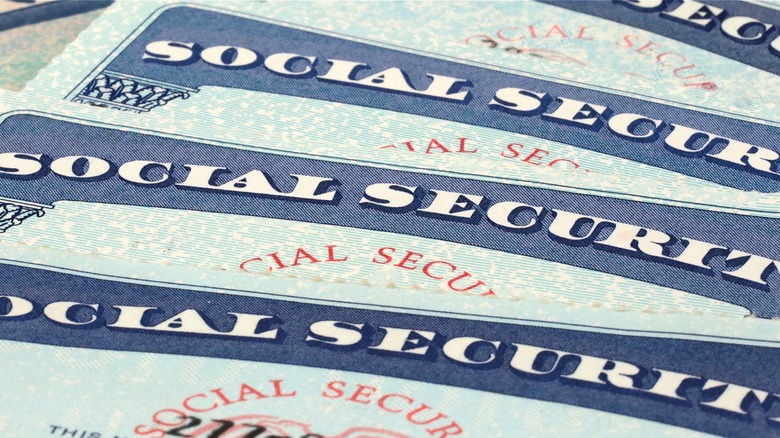Big Changes Coming To Social Security In September Thanks To 3 New Rules
For most Americans under age 65, Social Security is an issue of tomorrow, not today, at least as it pertains directly to them. The primary beneficiaries of Social Security are retirees, and the seemingly endless political squabbles over Social Security concern what state it might be in, in the near-to-mid term. But there are actually millions of Americans who aren't retired who depend on Social Security: dependents, disabled workers, and those of limited means and resources. It's this latter group that constitutes the intended beneficiaries of Supplemental Security Income (SSI).
For those aged 64 and under, they can receive SSI if they make less than $1,971 a month, have less than $2,000 in resources ($3,000 for couples), and a severe disability that impedes work or daily life, as laid out by the Social Security Administration. Those aren't the only conditions, however. The fine print has served to complicate SSI and reduce the number of beneficiaries for years. But, beginning September 30, 2024, three new rules go into effect that the Social Security Administration says will make SSI more simple and accessible, and will also increase payments. Read on to learn what they are.
Only 1 household member needs to qualify for SSI benefits
The three rules changes to Supplemental Security Income, which were announced earlier in 2024, were described as "systemic" by Social Security commissioner Martin O'Malley. The rule changes aim to expand the number of qualifying citizens, simplify reporting for SSI, and increase the amount of money paid out. One way to do that is to expand the definition of a public assistance household.
Previously, when assessing qualifying beneficiaries, the Social Security Administration defined a public assistance household as one in which every member of that household received payment from a means-tested public-income-maintenance (PIM) program. As of September 30, that definition will be changed to one where a PA household is one in which there is one SSI applicant or recipient, plus one additional member who receives PIM of some sort. The new rule also adds the Supplemental Nutrition Assistance Program, or SNAP, to the list of qualifying PIM programs, the first addition since 1980.
This change allows more individuals to qualify for SSI, potentially up to 109,000, according to reporting by CNBC. And it could see up to 277,000 current beneficiaries see larger payments by 2033.
Food assistance no longer reduces SSI benefits
An oft-criticized aspect of Supplemental Security Income (even by Social Security workers), was how it dealt with food — specifically, with food assistance. Friends and family will often assist those with disabilities or limited income by providing them with food or shelter. However, previous SSI rules sometimes counted food assistance as unearned income, including food assistance under the term in-kind support and maintenance, or ISM. Because of that, some SSI beneficiaries saw reduced payments, or else had their eligibility affected. The benefit reduction could be as high as a third of the total.
As of September 30, SSI will remove food assistance from ISM. Thus, it will no longer count as unearned income or as any factor in calculating a recipient's total SSI benefit or eligibility. Besides providing relief to beneficiaries and making their reporting burden lighter, the rule change hopes to also simplify the amount of work and review demanded by the Social Security Administration's bureaucracy.
Rent-subsidy policy has been expanded nationwide
While Social Security is the same across state lines, Supplemental Security Income varies by state due to varying supplemental funds those state governments provide (note, it's not available to those living in U.S. territories). An example of this is the rental-subsidy exception in relation to SSI; or in other words, receiving assistance with your rent is less likely to affect the benefits you receive from SSI. However, that rule initially only existed in seven states in Connecticut, Illinois, Indiana, New York, Texas, Vermont, and Wisconsin.
The Social Security Administration opted to take that policy nationwide, beginning September 30. An SSA document (via the Federal Register) specified that the relief would come to those applicants or beneficiaries whose rent met or exceeded the presumed maximum value of their property, not the current market rental value. Per Disability Scoop, this could raise SSI payments by $132 on average for affected beneficiaries. However, the means that the Social Security Administration plans to use to assess these benefits are complicated, and the Feldman Law Group reports that some may see their payments reduced due this rule change.

